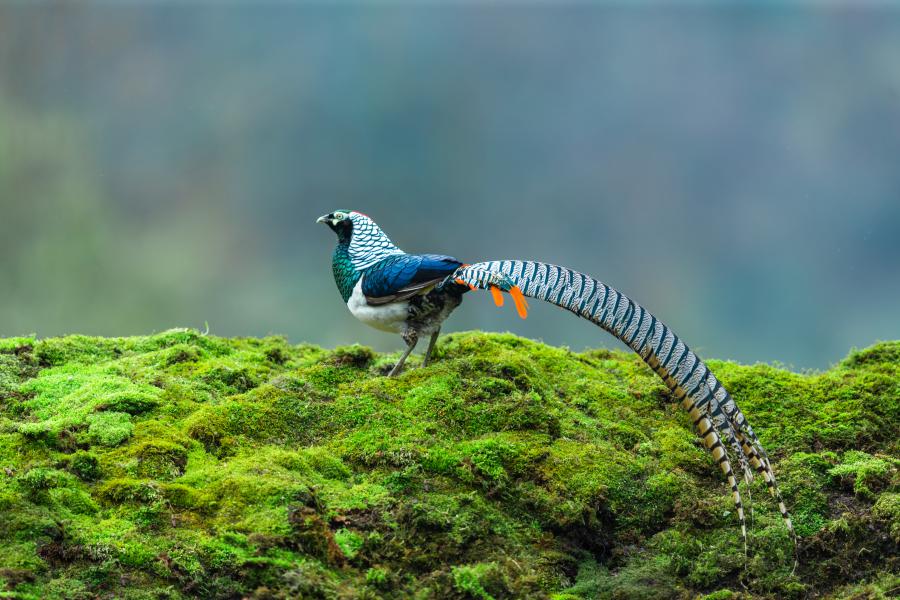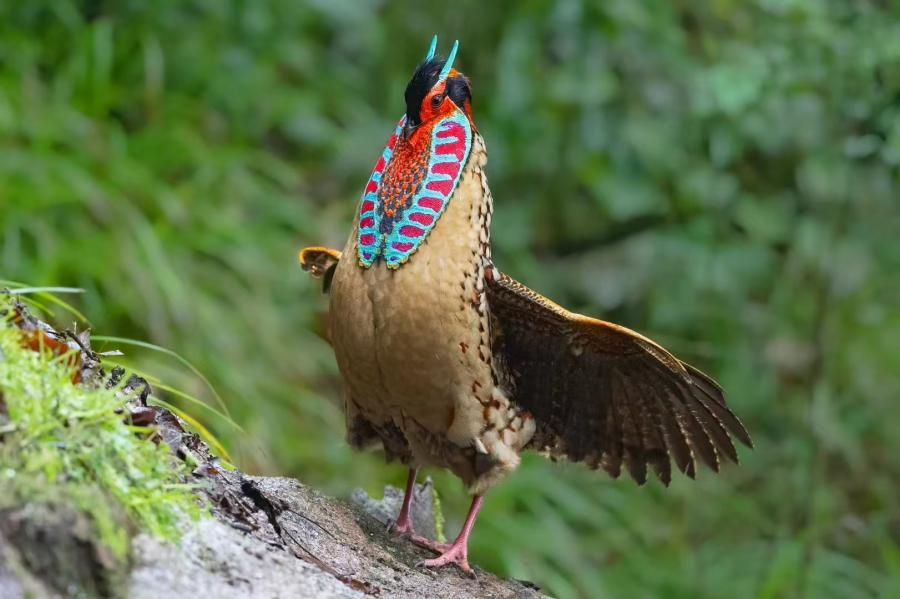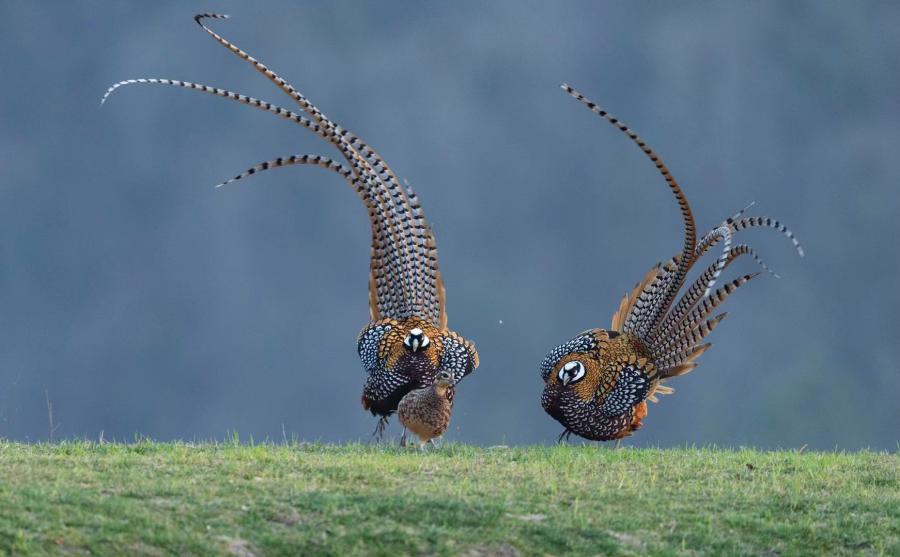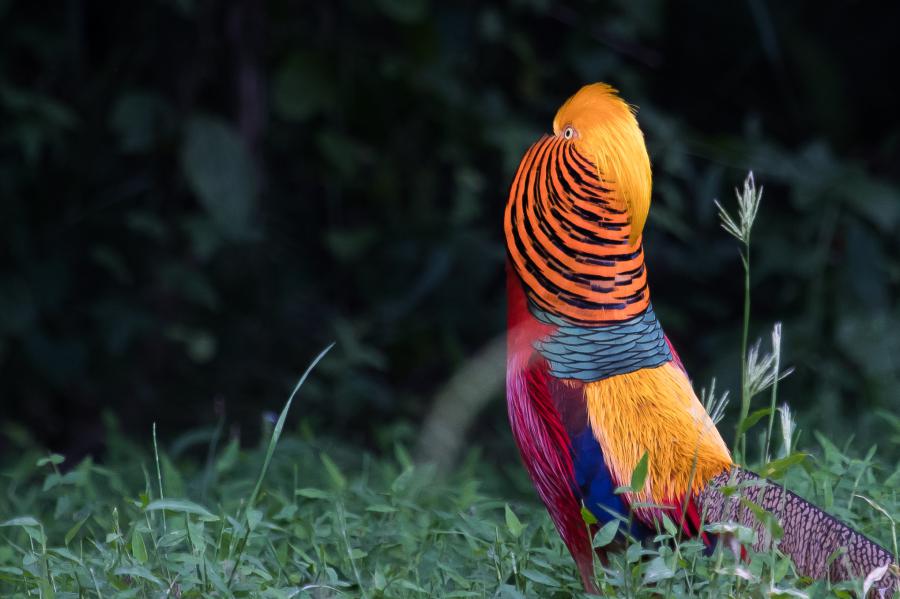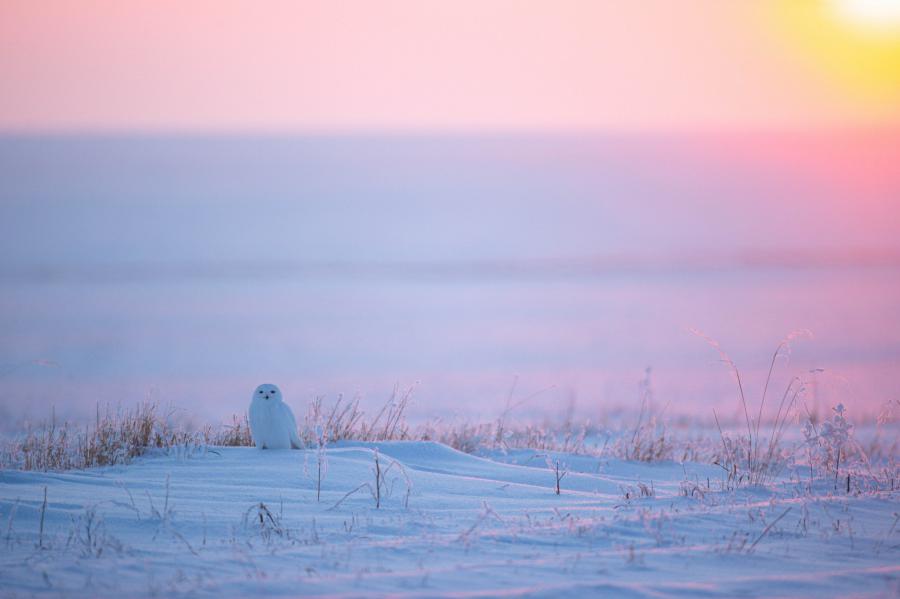Yancheng Area
Once in Yancheng, we will explore the expansive reedbeds, saltpans, and lagoons. The area has only recently gained attention from birders, despite being home to a significant population of Red-crowned Cranes. Silt from the Yangtze River has contributed to the coastline's expansion, and local fishponds have created additional habitats.
During our visit, we expect to see various cranes and may encounter a Hooded Crane or Sandhill Crane. There’s also a chance of spotting an over-wintering Saunders’s Gull.
In the reedbeds, we will look for the Eurasian Bittern and the Reed Parrotbill, which tends to make its presence known. We may also find Pallas's Reed Bunting and Ochre-rumped Bunting.
The area is rich in waterfowl, including Tundra Bean Goose, Falcated Duck, Baikal Teal, Chinese Spot-billed Duck, Smew, and Common Merganser.
Additionally, we will observe a variety of other species, which may include Eastern Marsh Harrier, Hen Harrier, Japanese Buzzard, Kentish Plover, Green Sandpiper, Red-flanked Bluetail, Daurian Redstart, Chinese Blackbird, Chinese Grey Shrike, White-cheeked Starling, Black-faced Bunting, and Chestnut-eared Bunting.
Shanghai and Rudong
The region stretching from Shanghai to Rudong is characterized by a diverse landscape featuring mudflats, wooded plots, and agricultural fields. These areas serve as crucial stopovers for migratory birds journeying between Southeast Asia and Australasia, while also hosting a number of resident species worth observing.
As we make our way between Shanghai and Rudong, we will take the opportunity to explore various hotspots, searching for an array of potential new species. Key targets will include the Marsh Grassbird and Reed Parrotbill, alongside a variety of migratory birds such as Ashy Minivet, Narcissus Flycatcher, Yellow-rumped Flycatcher, Mugimaki Flycatcher, Green-backed Flycatcher, Chinese Grosbeak, Chestnut Bunting, Pale-legged Leaf Warbler, Eastern Crowned Warbler, Siberian Rubythroat, Siberian and Pale Thrush, Siberian Blue Robin, Rufous-tailed Robin, Amur Falcon, Pechora Pipit, and possibly a Northern Boobook.
Rudong and Surroundings
While traveling to Rudong, we are likely to encounter several species of shorebirds. However, our time spent in the area will focus on locating some of the most sought-after species along the eastern seaboard of China. The Spoon-billed Sandpiper, for instance, can be seen at several locations along the East Asian-AustralAsian Flyway, but none are as reliable as the coastal flats near Rudong. This gives us a promising chance to see this critically endangered species. Additionally, we will have ample opportunity to search for other notable species staging in the area before continuing their migration southward, such as Saunders's Gull, Black-faced Spoonbill, Sharp-tailed Sandpiper, Long-toed Stint, Far Eastern Curlew, and Grey-tailed Tattler—all of which could potentially be seen in just one day!
Minjiang Estuary
The Minjiang Estuary will be a primary focus for at least a few hours. This area presents a chance to observe the Chinese Crested Tern, a bird that is present here only in spring and was, until recently, thought to be extinct. Although our chances of seeing this rare bird are slim, spotting one would place us among a very small number of birders who have had the pleasure of witnessing these elegant creatures.
Fuzhou Forest Park
Fuzhou Forest Park features an extensive network of well-maintained trails that facilitate birdwatching, alongside diverse habitats that support various species. Among our main targets will be the White-necklaced Partridge, which is not uncommon in the park's heavily wooded areas, as indicated by their vocalizations. However, we may need to invest considerable time to catch a glimpse of one. During our visit, we can also expect to be entertained by a range of desirable species, including Pale-headed Woodpecker, Chestnut Bulbul, Fork-tailed Sunbird, Great Barbet, Orange-bellied Leafbird, Chinese Bamboo Partridge, Grey-sided Scimitar Babbler, Ashy Minivet, Collared Finchbill, Indochinese Yuhina, Brown-headed Thrush, and Daurian Starling. Furthermore, we may encounter a variety of migratory birds, which could include several leaf warblers, thrushes, buntings, and possibly even robins!
Emei Feng
Emei Feng is recognized as one of the premier birdwatching destinations in southeastern China. This area’s heavily wooded slopes are home to elusive endemics such as Elliot's Pheasant and the sought-after Cabot's Tragopan. Additionally, healthy populations of Silver and Koklass Pheasants reside here. Birdwatchers will find a delightful mix of passerine species, including Yellow-bellied Tit, Fujian Fulvetta, David's Fulvetta, Chinese Hwamei, Buffy, Moustached, and Masked Laughingthrushes, as well as the Brown-chested Jungle Flycatcher and Spotted Elachura. Warbler enthusiasts will be particularly drawn to this area for the chance to add a variety of Phylloscopus warblers to their lists, such as Buff-throated, Hartert's Leaf, Kloss's Leaf, Sulphur-breasted, Bianchi's, Rufous-faced, and Alstrom's Warblers. To maximize our chances of seeing these species, we will explore both the upper reaches of the mountain range and lower elevations, driving along the best stretches of road to spot these often-shy pheasants.
Wuyuan
Wuyuan and the hills to its southwest encompass nearly the entire global range of the recently discovered Blue-crowned Laughingthrush. This region, while somewhat remote, also harbors several other birds of significant interest, including Mandarin Duck, Masked and Moustached Laughingthrushes, Grey-sided Scimitar Babbler, Pied Falconet, Swine’s Minivet, Brown-breasted Bulbul, Chinese Grosbeak, Brown Crake, Long-billed Plover, Short-tailed and Grey-headed Parrotbills, Chinese Bamboo Partridge, Brown-chested Jungle Flycatcher, and Red-billed Starling. We have dedicated at least a full day to explore this diverse habitat, which includes agricultural landscapes, well-wooded slopes, tranquil streams, and even the rooftops of local restaurants.
Dongzhai Nature Reserve
Dongzhai area, including Chinese Bamboo Partridge, Masked Laughingthrush, Chinese Hwamei, Black-capped and Crested Kingfishers, Narcissus and Yellow-rumped Flycatchers, Grey-capped Pygmy and Grey-headed Woodpeckers, the endemic Yellow-bellied Tit, Collared Finchbill, Mountain Bulbul, Rufous-faced Warbler, Streak-breasted Scimitar Babbler, Vinous-throated Parrotbill, White-crowned Forktail, and the scarce Tristram's Bunting.



